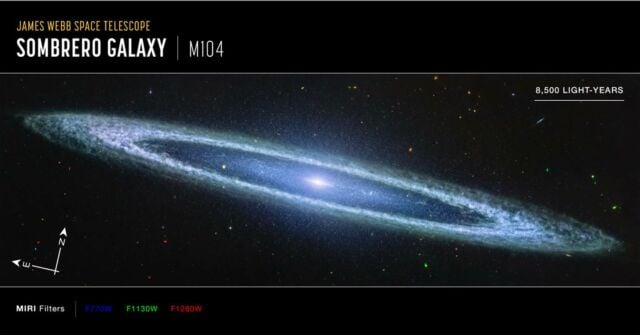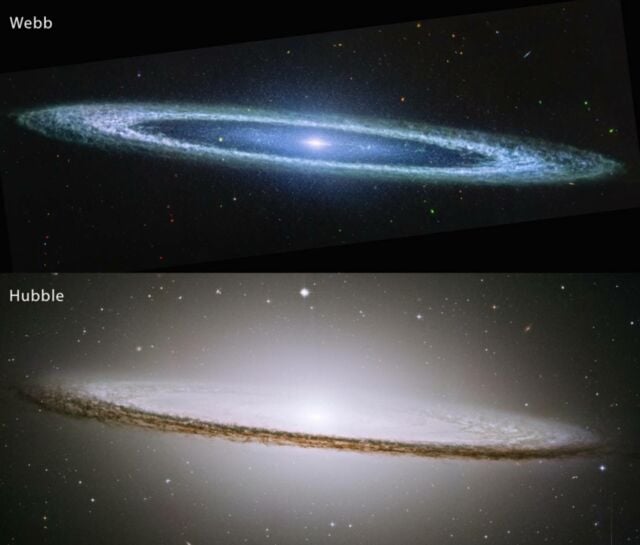 Sombrero Galaxy. NASA, ESA, CSA, STScI
Sombrero Galaxy. NASA, ESA, CSA, STScI
NASA’s James Webb Space Telescope recently captured a detailed view of the Sombrero Galaxy using its MIRI (Mid-Infrared Instrument).
Mid-infrared light highlights the gas and dust where stars are forming in the galaxy’s outer disk.
The image reveals the clumpy structure of dust along the galaxy’s outer ring.
However, the Sombrero Galaxy produces fewer than one solar mass of new stars per year, compared to the Milky Way’s approximately two solar masses annually, making it less active in star formation.
 Sombrero Galaxy (Hubble and Webb Image). NASA, ESA, CSA, STScI, Hubble Heritage Project (STScI, AURA)
Sombrero Galaxy (Hubble and Webb Image). NASA, ESA, CSA, STScI, Hubble Heritage Project (STScI, AURA)
Located about 30 million light-years away in the Virgo constellation, the Sombrero Galaxy, also known as Messier 104 (M104), has been observed across various wavelengths.
A video comparison showcases images from three telescopes: the Spitzer Space Telescope in infrared, the Webb Telescope in mid-infrared, and the Hubble Space Telescope in visible light.
source WebbTelescope





Leave A Comment